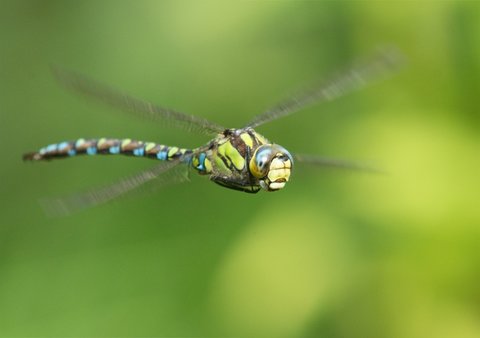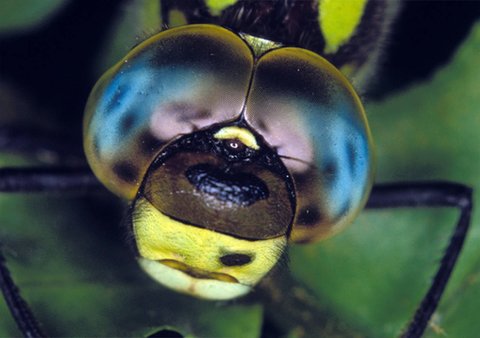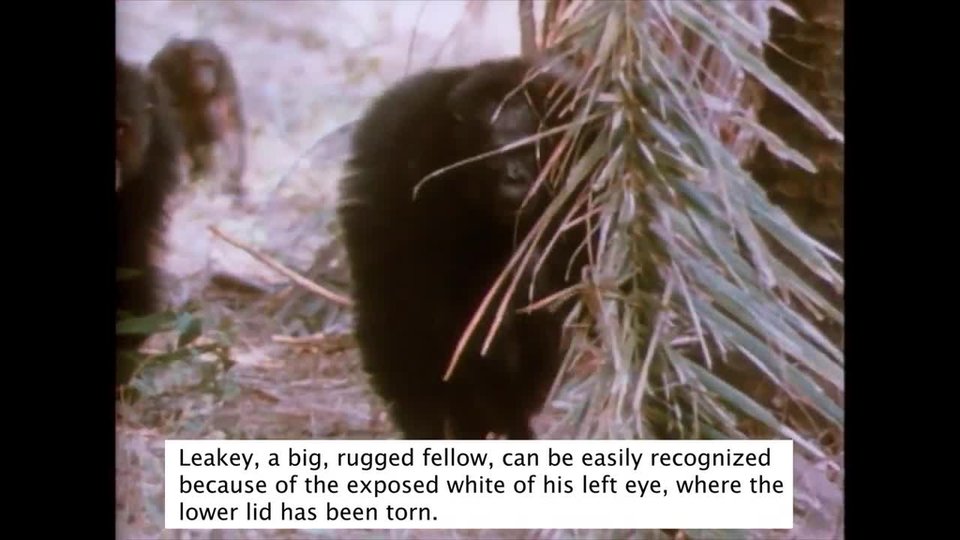In Flight
Theadultdragonflylooksdifferentfromitsnymphform.Themaleadult'sblackbodyisabout
70millimeters(2.8inches)long.Ithasdashesofapplegreenandturquoise.Itsbrightcolorsareusedtoattracta mate.

Thismalesouthernhawkerdragonflyisin flight.

Anadultsouthernhawker'seyeshavethousandsof lenses.
Theadultdragonflyhastwocompoundeyes.Eachhasthousandsoflenses.Thefrontofeacheyefocusesonforwardflight.Thetopofeacheyesearchesfor prey.
Adultdragonfliesalsohavethreesimpleeyes.Theyformatrianglebetweenthecompoundeyes.Nervesconnectthemtothedragonfly’sflightmuscles.Theysignalthepositionofthedragonfly’s prey.
Thesouthernhawkerhastwosetsofwings.Itusesitswingstoflyforward,backward,orsideways.Itcanbeatitswingstogether.Or,itcanmoveeachoneseparately.Tofly,thewingstwistinafigure-eightmotion.Itcanflyupto
54kilometers(34miles)an hour.

Dragonflieshavesixlegs,butmostcannot walk.
Thissouthernhawkerisonthehuntforflying insects.
FocusedHunter
Thesouthernhawkerisadeadlyhunter.Itssuccessrateisabout
95percent.Itspreyiscaughtwhilethedragonflyisin flight.
Thedragonflymustbeabletopredictwhereitspreywillbe.Itmustfigureoutthreethings.Thedistance.Thedirection.Thespeedofitsprey.Thenthedragonflyplotsits course.
Thedragonflyholdsitslegsforward.Itgrabsthepreyintheair.Thenitbitesofftheprey’swingsbeforeeatingits body.
Eatingandmatingareasouthernhawker’sonlytwojobs.Withintwomonths,theadultsdie.Thentheireggswaitforthelifecycletobegin again.

Somefemaleslaytheireggsinthe water.

